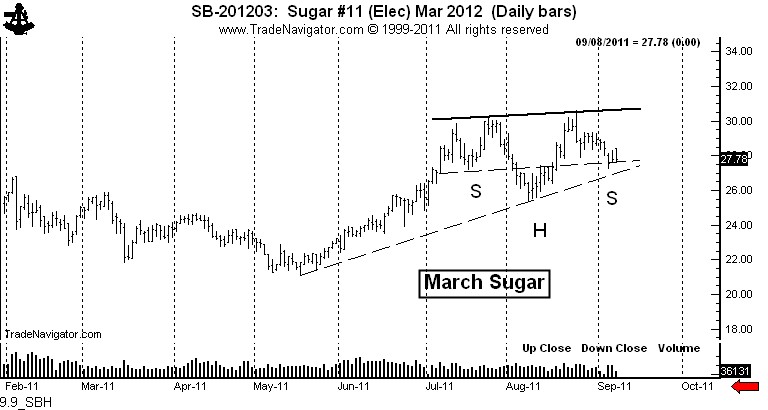The Principle of Least Regret
I am a discretionary trader, as opposed to a mechanical or systematic trader. A comprehensive systematic approach dictates all trading decisions — entry, leverage, trade management. By contrast, trading decisions in a discretionary approach are governed by subjective judgement to one degree or another.
If would be great if there was never a doubt about a trading decision. But, some doubt is inherent in a discretionary approach. In a real sense, a discretionary trader lives in a world of doubt and second guessing. There are some trades in which I have very little doubt about the entry price and timing, leverage and sizing, the risk control protocol and the price targeting. But, other trades can be more subject to doubt. Some of my best trades through the years have been the hardest to put on and hold due to these doubts and fears.
I am a major bull in Sugar based on its quarterly and monthly charts. I believe Sugar should go to 60 cents. Thus, I have a bias in interpreting the daily Sugar chart toward the buy side of the market.
It is impossible for a discretionary trader to be purely unbiased. Whether we discretionary technical traders want to admit it or not, our biases are reflected in the way we intepret market behavior. Like it or not, no discretionary trader is free of biases. I have a bullish bias in Sugar, rightly or wrongly.
I am interpreting the daily chart as a possible continuation H&S pattern. Based on this interpretation, the market should hold around current levels. Yet, this interpretation, by my own admission, is much more subjective than I would like to have it be. It might be that the daily Sugar chart is developing a bearish double top, not a bullish continuation H&S pattern. In fact, one cirteria of a well defined chart pattern is that it can be interpreted to support different outcomes.
So, why would I go long if the pattern is not as clear as it might be. Enter a concept I call “the principle of least regret.” Let me explain. I am very lightly long Sugar. I am risking only about 25 basis points on the trade (not 25 tickts). I put the trade on based on the principle of least regret.
Given my bullish bias, my regret level of being wrong and taking a loss is much less than the regret I would experience if Tuesday’s low holds and the market moves higher without hesitation. Only by anticipating the H&S am I able to build enough leverage that — if I am right in my interpretation — I can maximize the profit opportunity.
I am not sure this makes sense to you, but it is the way I deal with the inherent doubt that can sometimes enter a trade based on a discretionary approach. I may very well be wrong on my current Sugar trade. That’s ok. I take a lot of losses. I have no great ego to be right. But, I do have a drive to gain maximum leverage on the really good trades. I am willing to be wrong in order to accomplish this. I don’t really regret taking a loss on a pattern that I have thought through. I do regret it when I read a market correctly but failed to respond in a timely manner.
$SB_F







Trackbacks & Pingbacks
[…] “psychological leverage” over our opponents. Our brain is constantly calculating future potential regret; rather than blocking this out why not accept that most of our competitors are feeling the same and […]
[…] through a few rounds with the market, our mental database becomes filled with instances where we regret not having made the timely decision to enter or exit. In my opinion, this is what drives the […]
Leave a Reply
Want to join the discussion?Feel free to contribute!